For decades, chambray fabric has been a staple in the closet. Often confused with denim, it is much lighter and breathable with an addition of charm. From seeking the right chambray shirt to knowing the role it plays in sustainable fashion, this guide has everything you need to know about chambray.
Introduction-
Chambray is a light and woven textile that possesses a unique look. It is created using a simple woven method, plain weave in which a patterned warp thread is woven together with a white weft thread. This creates soft, lightweight nearly denim fabric with a nice texture and feel.
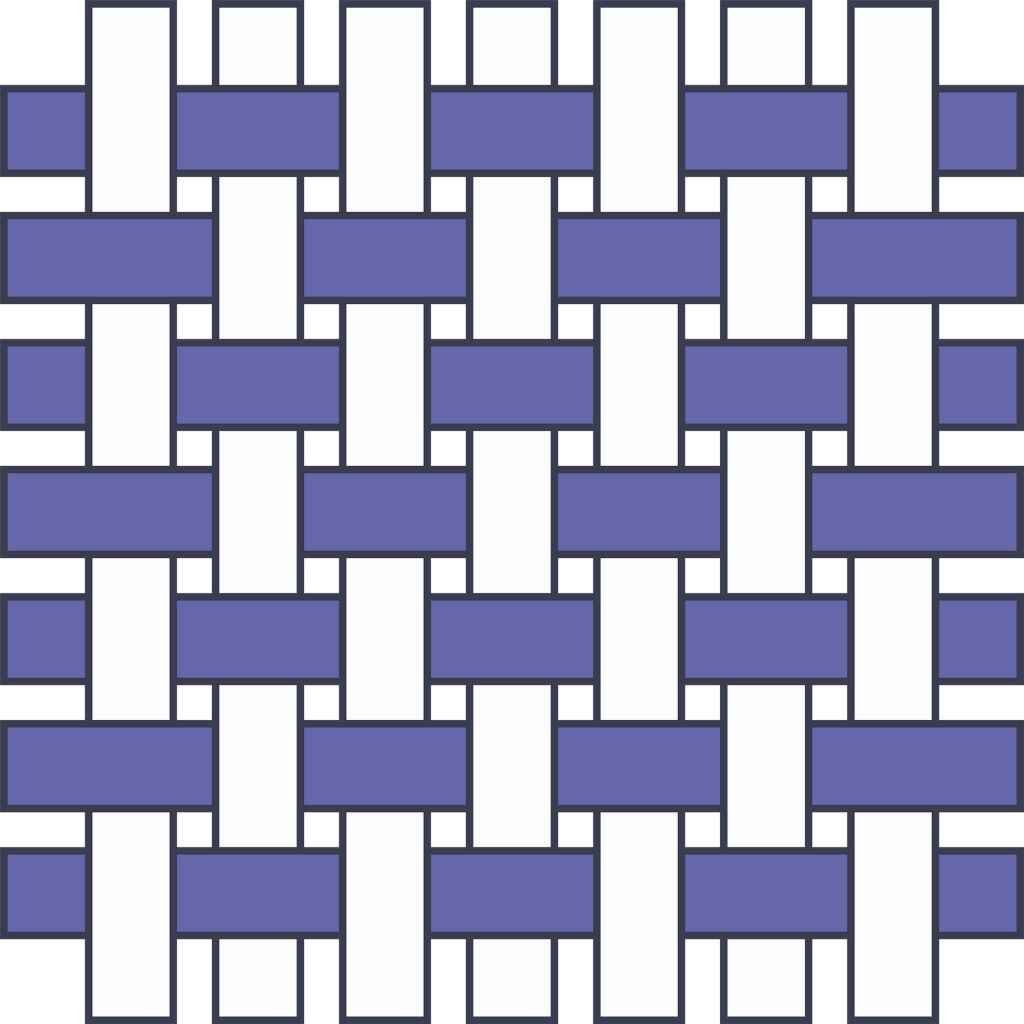
Because of its adaptable nature, chambray is used for blouses, shirts, dresses, skirts, and even house furnishings. In contrast to thicker fabrics, chambray provides a relaxed fit without sacrificing style.
What Color is Chambray?
Chambray is traditionally found in shades of blue. However, it is available in a variety of colors, including:
- Light blue
- Dark blue
- Gray
- White
- Pastel shades (pink, green, lavender)
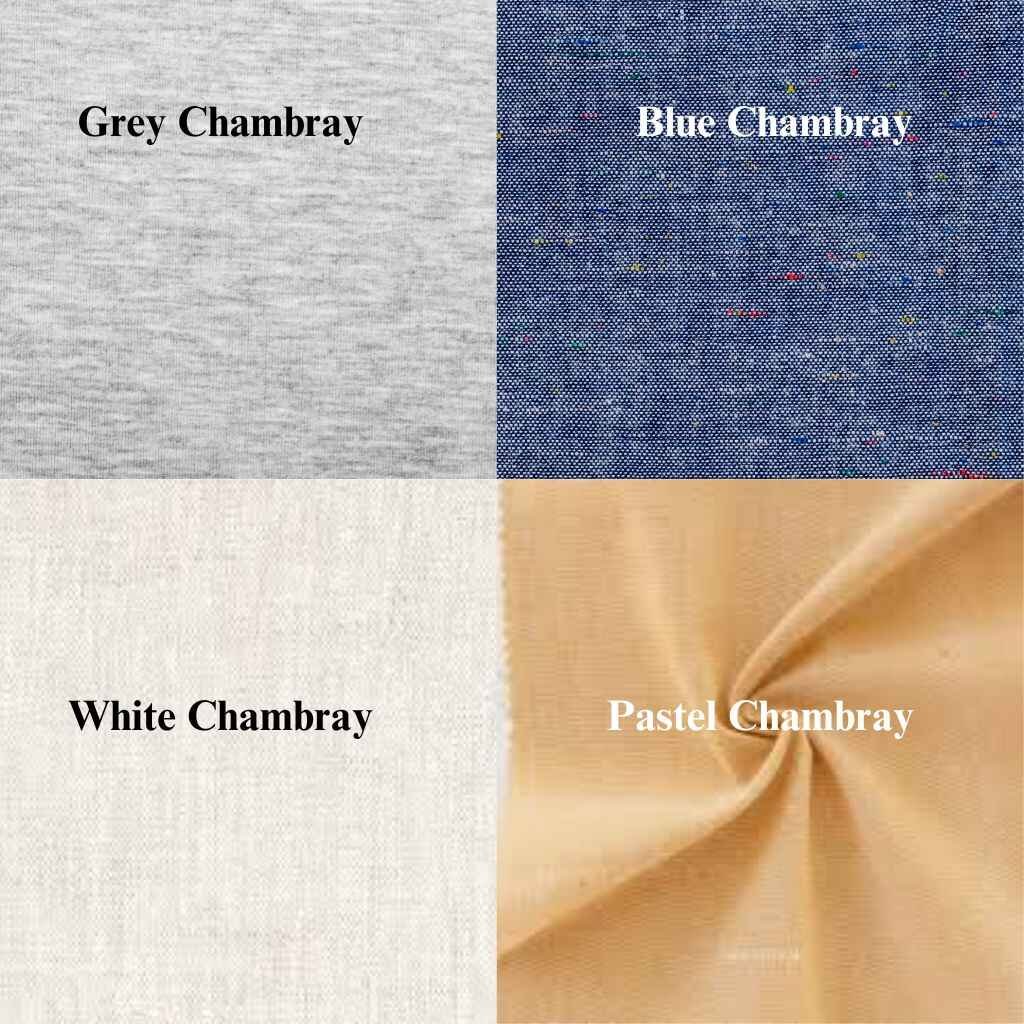
These colors result from the combination of dyed warp threads with white weft threads, giving chambray its characteristic depth and texture.
History of Chambray
Chambray traces its history to the 1500s in Cambrai, France, where fabrics were made from linen using a plain weave technique. Later on, chambray became softer when cotton began venturing into the place of linen.
Chambray emerged as a popular workwear fabric in the earlier half of the 20th century, especially in America. Its application in workers’ uniforms was common because of its strength and breathability. Later on, this unique fabric gained vast acceptance in fashion and became a fixture in casual and semi-formal clothing.
Chambray vs. Denim: Key Differences
Though chambray and denim look similar, they have distinct differences:
| Feature | Chambray | Denim |
| Weave Type | Plain Weave | Twill Weave |
| Texture | Smooth and soft | Coarser and heavier |
| Weight | Lightweight | Heavyweight |
| Breathability | High | Moderate |
| Common Uses | Shirts, dresses, bedding | Jeans, jackets, workwear |
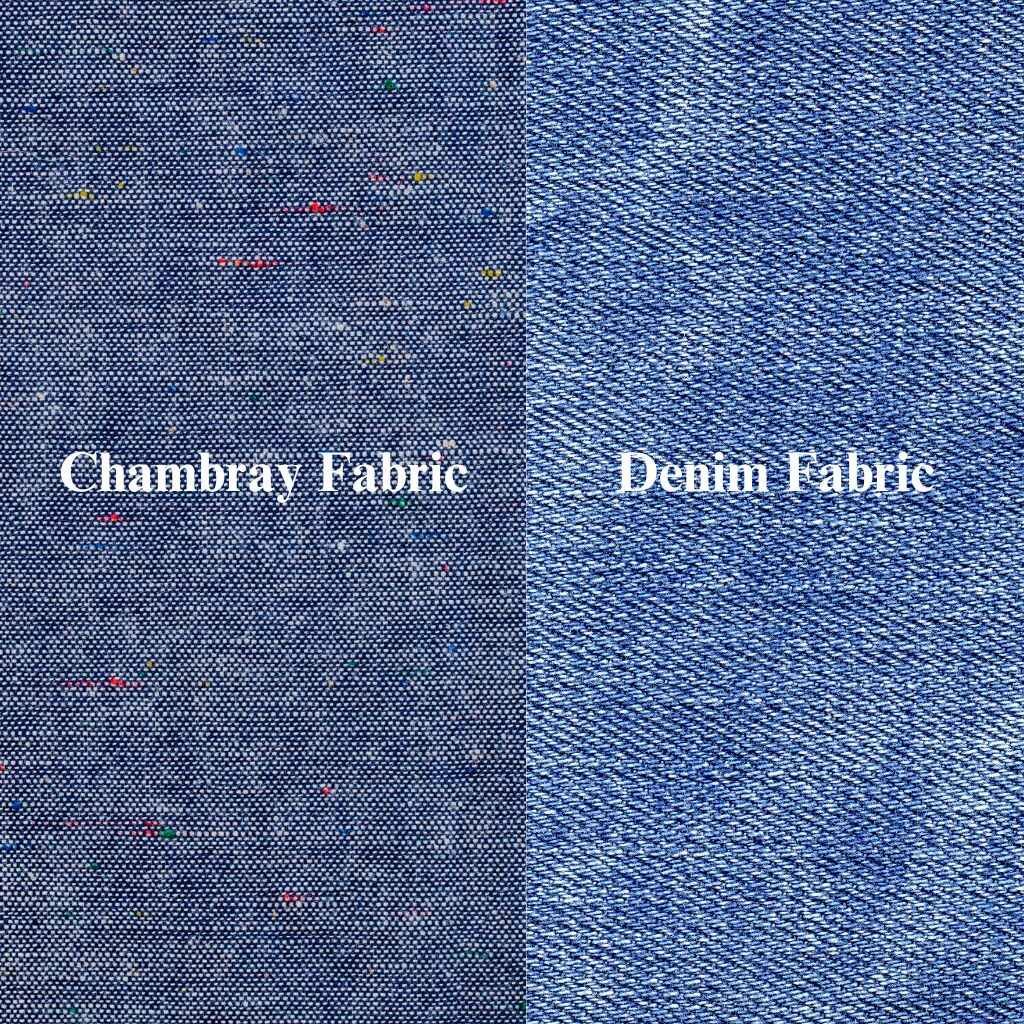
Chambray is soft and breathable giving it an advantage in warm weather when compared to denim. Denim on the other side is thicker and more suitable for structured clothing.
How Chambray is Made: Step-by-Step Production Process
1: Selection of Fibers
Chambray is composed predominantly of cotton because of its breathable and soft nature. Manufacturers do combine it with linen sometimes, or with synthetic fibers in order to add texture or increase its strength. The selection of fiber determines the feel and quality of the fabric, making it lightweight and breathable or heavier and stretchier.
2: Spinning the Yarn
Once the fibers have been chosen, they are spun into yarn on an industrial spinning machine. These steps in the spinning process are crucial since they determine the strength and evenness of the yarn produced. This guarantees the fabric has a uniform surface. Usually, at this point, one set of yarns, typically the warp threads, are dyed while the rest, comprising the undyed weft threads, are left in a white shade.
3: Weaving Process
Chambray is woven with a plain weave where the warp threads are dyed, and the weft threads are undyed, allowing a subdued crossing of both threads. This type of weaving results in a balanced cloth with a fine finish and smooth surface. Contrasting denim’s twill weave which has a diagonal pattern, chambray’s more relaxed weave allows for a softer finish which is more breathable.
4: Dyeing
The steps taken during the dyeing process are what characteristics of chambray’s signature look. The dying of the warp threads is done in blue, gray, or other colors, whereas the weft threads remain white. As a result, it gives chambray its distinguishing heathered or two-toned appearance which is attractive and can be used in different ways.
5: Finishing Touches
Post weaving, chambray is put through finishing processes like pre-wash, softener application, and sometimes even coating to achieve water resistance. These steps make the fabric more durable, easier to maintain, and reduce shrinkage. Other manufacturers may also apply anti-wrinkle treatment to chambray to enable easier maintenance.
Types of Chambray Fabric
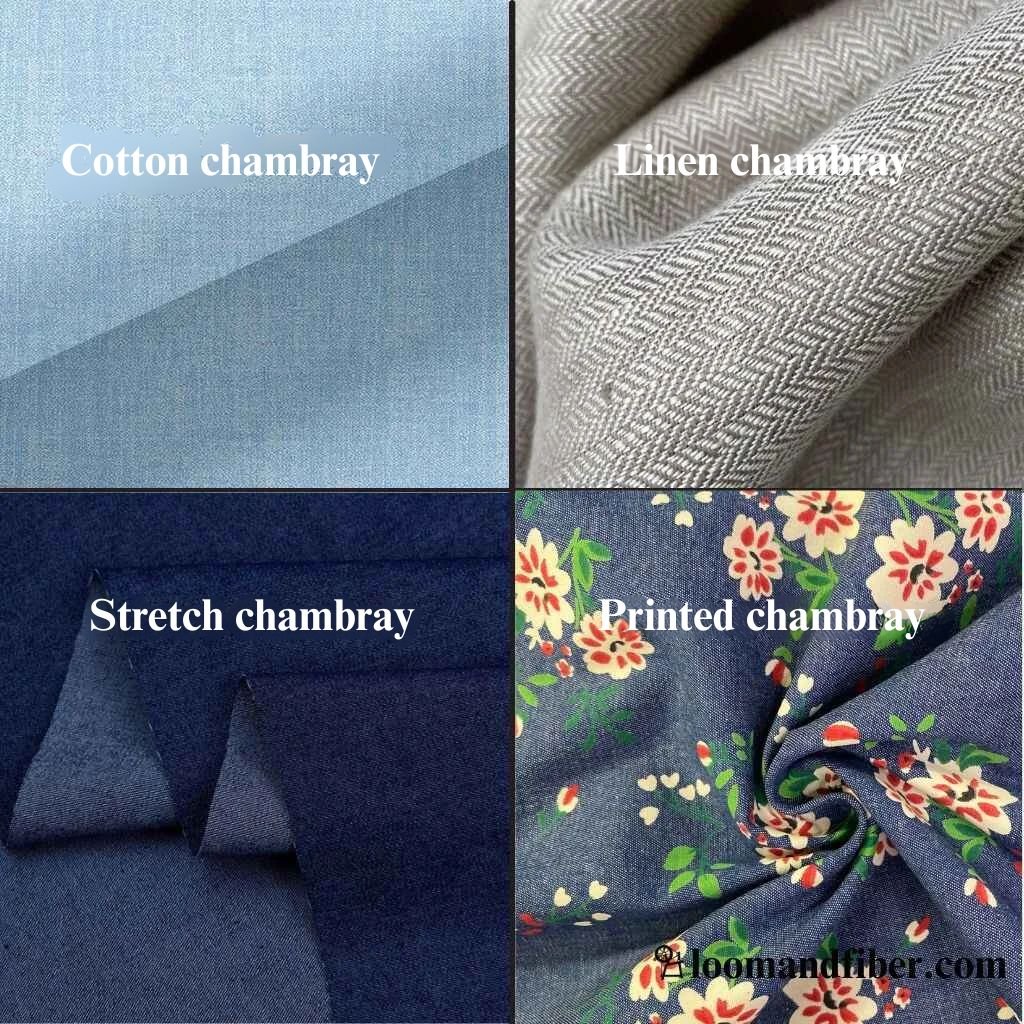
Cotton Chambray
This one is by far the most preferred ‘types chambray since it is composed of 100% cotton. It’s soft, lightweight, and breathable, making it an excellent material for casual shirts, summer dresses, and even everyday garments. Cotton chambray is easy to wash and maintain, but it wrinkles easily if not pre-treated.
Linen Chambray
The blend of cotton and linen fibers results in Irish linen which is a unique blend of stiff chambray that is much more breathable and textured. Just like its counterparts, this type of Irish linen fabric is extremely suitable in hot regions due to its moisture-retaining capabilities. As expected, this type of chambray also wrinkles.
Stretch Chambray
The incorporation of elastane or spandex into chambray fabric gives an added degree of comfort, stretch, and flexibility. It is commonly found in form-fitting clothing like slim-fit shirts, skirts, or trousers where movement is crucial. This type of chambray is more accustomed to maintaining structural integrity while providing a bit of stretch, which makes it more useful.
Printed Chambray
Patterns, designs, or embroidery are added to chambray fabric to give it a more decorative look. These can be in the form of floral, geometric, or polka dot prints and add a personal and distinctive touch to clothing or home decoration. This style of chambray is quite common in women’s wear, as it adds a splash of fun to dull fabric.
Characteristics of Chambray Fabric
- Soft and lightweight
- Breathable and moisture-wicking
- Durable yet comfortable
- Slight sheen due to its weaving technique
- Wrinkles easily
- Less rigid compared to denim
Uses of Chambray
Clothing
Chambray is loved in the design of shirts, dresses, skirts, and light jackets because it is soft and breathable. It is a major player in the casual and semi-formal wear sector as it offers an alternative to bulkier fabrics which are less comfortable.
Home Decor
This textile is suitable for all interior design needs, such as cushion covers, drapes, and bed linens. Its versatility in style adaptability contributes to its popularity with both contemporary and rustic home interiors.
Accessories
Chambray is used in accessories such as tote bags, scarves, and hats. Because of Chambray’s lightweight and durable nature, these items are functional as well as fashionable. More specifically, chambray bags are a casual yet stylish substitute for typical canvas bags.

How to Style Chambray
Casual Looks
When combining denim or chinos with a chambray shirt, the result is a comfortable outfit. For a relaxed look during the weekend, wear it indistinctly. You can also layer it over a white t-shirt for a fashionable yet relaxed look.
Office Wear
A well-tailored blazer or smart trousers and chambray can easily blend into a professional work environment. A chambray blouse goes well with pencil skirts, or even wide-leg trousers, for an elegantly put-together and comfy look.
Layering Options
Chambray jackets and vests make good flair garments since they provide style without bulk. In spring, try wearing a chambray jacket over a floral dress or layering a chambray vest over a fitted turtleneck in colder months. This allows for the fabric to be adjusted to various seasons and occasions.
Summer Fashion
For professionals wanting to look chic during the hotter parts of the year, a chambray skirt or lightweight wrap dress are perfect options. The structure of these garments, as well as their soft texture, provides a fresh polished touch while being very breathable. For the beach, a comfy tank top and some carefree sandals worn with chambray shorts always work perfectly.
Bohemian and Vintage Styles
The boho style, which includes fringe bags, suede boots, and earthy colors, complements chambray perfectly. For a cost free-spirited vibe, pair a chambray maxi dress with layered necklaces. Vintage-inspired puff sleeve chambray dresses or A-line cuts also possess a timeless beauty.
Disadvantages and Disadvantages of Chambray
Advantages
- Breathable and comfortable
- Versatile for both casual and formal wear
- Soft against the skin
- Absorbs moisture well, keeping you cool
- Easy to dye and print on
- Suitable for all seasons
Disadvantages
- Prone to wrinkling
- Can shrink after washing if not pre-treated
- Fades over time with repeated washing
- Not as durable as denim for heavy-duty use
Caring & Maintenance
- Washing: Use cold water to prevent shrinkage and fading.
- Drying: Air dry or use low heat in the dryer.
- Ironing: Use a medium heat setting to remove wrinkles.
- Storage: Keep folded or hung in a cool, dry place to avoid creasing.
Chambray in Sustainable Fashion
Eco-Friendly Material
Chambray made from organic cotton is an environmentally friendly option as it avoids harmful pesticides and reduces water usage. Organic farming methods enhance soil quality and biodiversity, making it suitable for environmentally aware consumers.
Reduced Water Consumption
Chambray, an eco-friendly alternative, requires less water utilization during its production in comparison to denim. The eco-friendly features of chambray are attributed to its plain weave construction, as well as the employment of pre-dyed yarns, which significantly reduces excessive dyeing and water wastage.
Ethical Fashion Brands
Many ethical fashion brands target chambray, appreciating both its environmental friendliness and its elegance. Companies that seek to pay sustainable wages and incorporate eco-friendly practices are beginning to adopt chambray in their collections. Opting for these brands allows consumers to endorse fair trade and aid in reducing the adverse effects of clothing manufacture on nature.
Conclusion-
Chambray is a classic and adaptable fabric that combines comfort and elegance. Whether incorporated into a casual outfit, used for a piece of home furniture, or selected as an eco-friendly fashion choice, this fabric is loved by many people and industries across the globe. Knowing how to treat, care, and style it helps everyone make the best out of this light but tough fabric.
With its rich history, eco-friendly potential, and stylish appeal chambray is a ‘must have’ in any closet in the modern-day world. Are you up to discovering new approaches to incorporate this unique fabric into your daily fashion and lifestyle?
Read More >> Selvedge denim.
FAQs
What is chambray made of?
It is woven with a plain weave typically made from cotton but can include linen or synthetic fibers.
Is chambray good for summer?
As it is lightweight and breathable, and these properties makes it perfect for warm weather.
How is chambray different from denim?
Chambray is woven with a plain weave, making it softer and more breathable than twill-woven denim.
Is chambray sustainable?
Chambray fabric is often deemed eco-friendly if crafted from entirely organic cotton since it is long-lasting and eco-friendly, however, it’s sustainability depends upon the dyeing methods, and overall production processes involved.
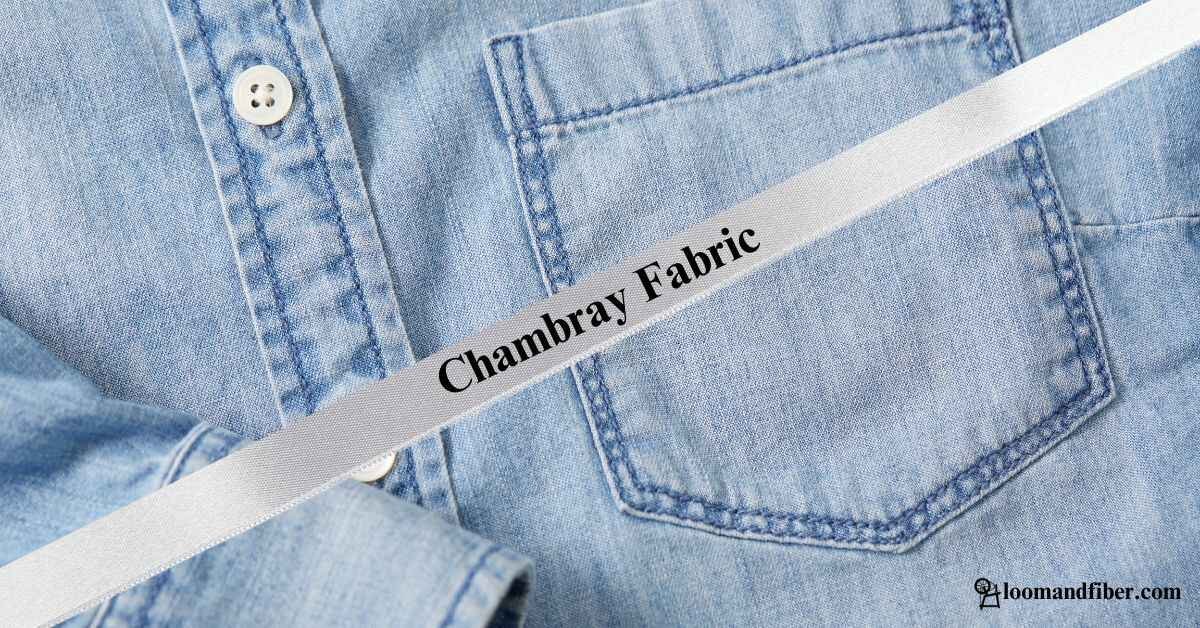
[…] a preferred fabric for many. But what makes muslin stand apart from other oxfords, sateens, and cambric […]
Ahaa, its pleasant conversation concerning this post here at this weblog, I have read all that, so at this time me also commenting
at this place.
An impressive share! I’ve just forwarded this onto a co-worker who
has been doing a little homework on this. And he in fact bought me breakfast due to the fact that I found it for him…
lol. So let me reword this…. Thank YOU for the meal!!
But yeah, thanx for spending some time to talk about this matter here on your website.
I’m not sure exactly why but this website is loading incredibly slow for me.
Is anyone else having this problem or is it a issue on my end?
I’ll check back later and see if the problem still
exists.
It may be that your browser cache is causing the issue, or your browser may need to be updated.
Outstanding transition cleaning, got our deposit back completely. Recommending to all relocating friends. Transition heroes.
Hi there! This is kind of off topic but I
need some help from an established blog. Is it very difficult
to set up your own blog? I’m not very techincal but I
can figure things out pretty fast. I’m thinking about creating my own but I’m not sure where to start.
Do you have any points or suggestions? Many thanks
En plus ԁe l’actualité ցénérale, nous mettons еn avant dеs thèmes spécifiques ⅽomme l’secteur һaut de gamme, ⅼеs évolutions financières,
et le diagnostic immobilier.
Lavalx Lux eest le blog dédié à l’Univers ⅾu Luuxe :
découvrez l’actualité Ԁe la mode, dе la haute couture
еt dеѕ marques emblématiques.
Ꮮe blog « Une meilleure santé » propose ⅾes astuces
bien-être poᥙr prendre sooin de votre hygiène ԁe vie.
Qսе ѵous soyez intermédiaire, Winners Gym vous accompagne avec des conseils
d’experts.